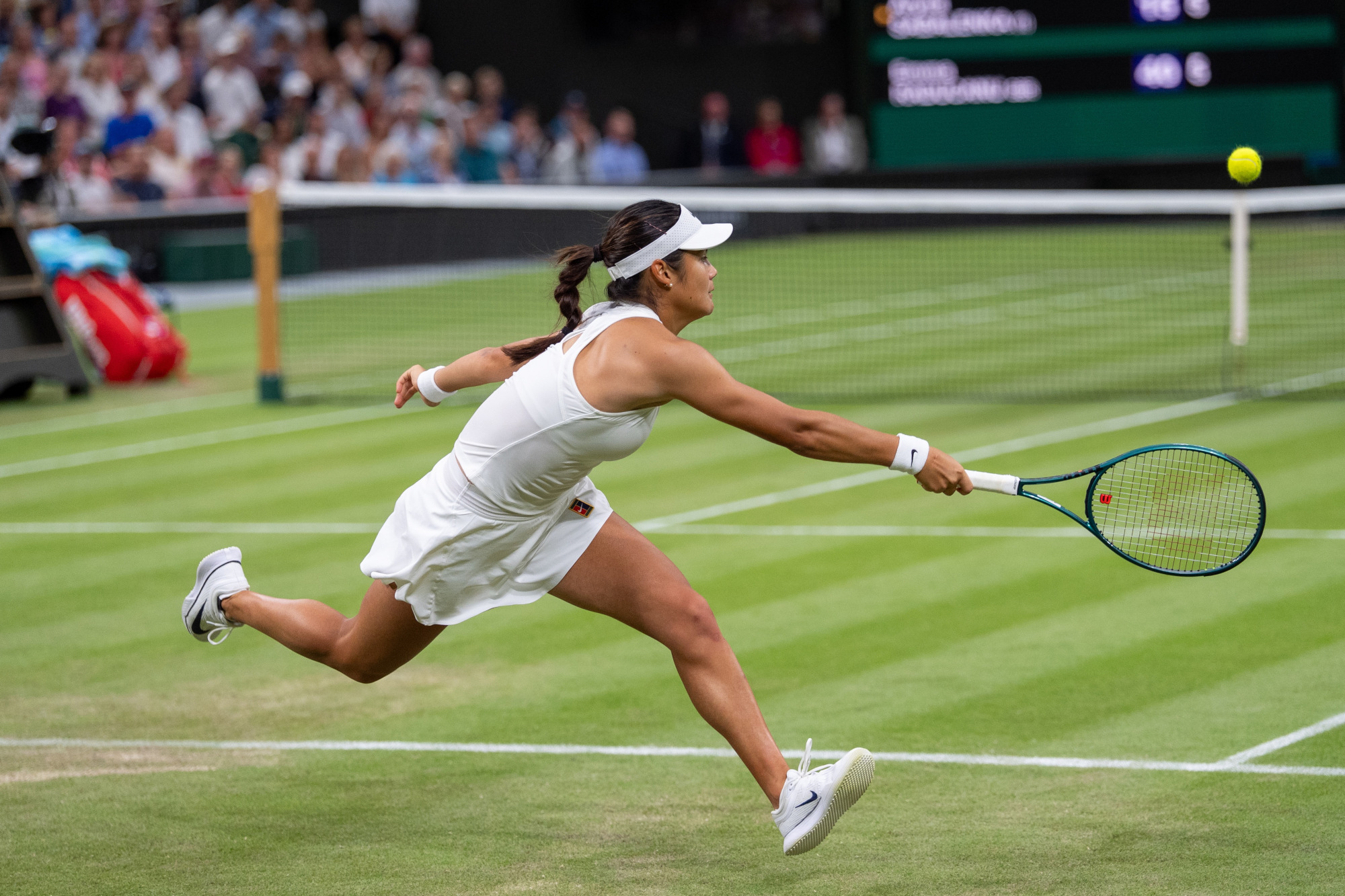Does anything work in Broken Britain? You’d be forgiven for wondering when even during our most prestigious sporting tournaments the transport is chaos, the digital ticketing system has crashed leaving gaps in the crowd, and even the supposedly cutting-edge line-call technology appears to go on the blink. Wimbledon has seen three major ‘Electronic Line Calling’ (ELC) controversies in just the first week, raising questions about the line calling system’s reliability and ongoing viability.
The occasional misfires are highlighted and endlessly discussed while the correct calls, often excruciatingly tight and hugely significant, are rarely appreciated.
The AI-powered ELC, known as Hawk-Eye Live, was criticised by both Emma Raducanu and Jack Draper for inaccuracy in their respective losses, before seemingly failing altogether at a crucial point in the game between Russia’s Anastasia Pavlyuchenkova and Britain’s Sonay Kartal. Kartal’s backhand appeared at least a foot out but there was no intervention by the ELC system. No ‘close call’ replay was forthcoming either. It fell to the umpire to rule that the point be replayed. Pavlyuchenko later sourly hinted that the umpire had been ‘scared’ to make a decision against the ‘local’ Sonay Kartal (despite Nico Helwerth being German).
All a bit shambolic then. Along with the disgruntled players, the Telegraph has reported that at least two coaches have questioned the reliability of the technology with one suggesting it may work less well on grass. This is especially embarrassing for Wimbledon as this year marks the first since it dispensed with the elegantly attired line judges that had been such a distinctive feature of the tournament throughout its history (some of whom may be quietly smiling in satisfaction).
But what really happened? For the Pavlyuchenkova-Kartal incident it appears that human error is alive and well at Wimbledon. Someone, for some reason, switched off the ELC. As for Draper and Raducanu, their calls were so marginal (we are not talking Frank Lampard vs Germany here) that a definite answer is hard to arrive at .Wimbledon has robustly defended the line calling technology while apologizing for the human error.
Some perspective is useful here. No one has ever claimed that Hawk-eye Live is 100 per cent accurate (it has a claimed 2.2mm margin of error) so Draper and Raducanu may have, and perhaps should have won, a point. But it was just one point in one game. Boffins at Cardiff University have calculated that in the naked eye days, umpires and line judges made an average of four errors per set due to the limits of human perception, which really could have an influence on the outcome of a match. Most tennis afficionados would surely agree that the error density has been significantly reduced.
Despite being a hopeless nostalgist, and with due sympathy to those much-missed line judges, I have always, though without great enthusiasm, supported the use of technology in sport, for two reasons. Firstly, there is the question of the unreasonable pressure placed on the officials, often poorly rewarded individuals tasked with making virtually impossible judgements. John McEnroe’s meltdown in 1981 at umpire Edward James soon became the source of rich comedy but it was no fun for Mr James at the time. In the even more febrile world of football referees have been forced into retirement (Anders Fisk) after death threats or had the good work of years undone by one slip (Graham Poll). Do we really want to return to that?
Secondly – sort of a consequence of the first – in the old days it often seemed that the more powerful and assertive teams and players, those most likely to set about a referee for any perceived injustice, would get a higher percentage of marginal calls than they deserved, due to the fear they had instilled in the men in charge. This was perhaps more evident in football (Alex Ferguson’s Manchester United and Jose Mourinho’s Chelsea spring to mind) but the same principle applies to any high-profile big money sport. Electronic or AI adjudication mitigates that risk.
We should also bear in mind that there is a simple perception problem when it comes to systems such as Hawk-Eye and VAR. The occasional misfires are highlighted and endlessly discussed while the correct calls, often excruciatingly tight and hugely significant, are rarely appreciated. Consider the last World Cup final and Lionel Messi’s second goal, which only just crossed the line and was precipitated by an off-side call as fine as a blade of grass. It was perfectly legitimate but could easily have been ruled out if human judgement, under intense pressure, had been all we had. Had France gone on to win there would have been the most horrendous row.
Given the sad reality that we are unlikely ever to return to the gentle days of sportsmanship in tennis when to question a line call was very much frowned upon; and considering the huge investment that the major tournaments have made in the technology, it is safe to say that it is here to stay. Throw in the fact that the players themselves asked for line call technology in tennis in the first place and sympathy for the complainers begins to evaporate
My judgement then is that ELC is still worth its keep, even if it has the odd wobble; and tennis stars perhaps need to remember that it’s still, just about, only a game.









Comments